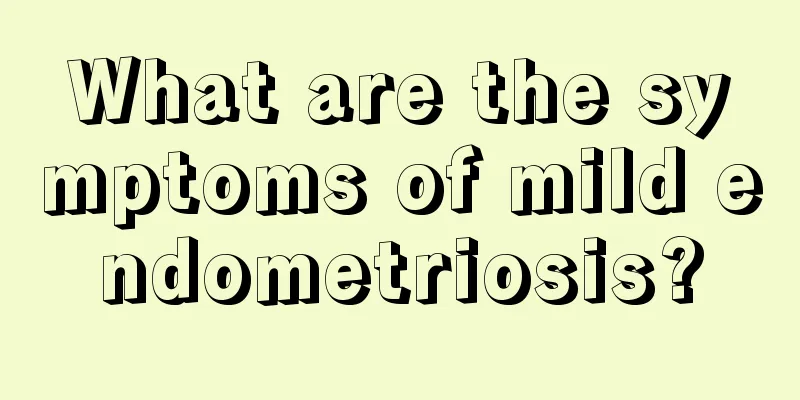What are the symptoms of low-grade cervical squamous intraepithelial lesion?

|
Women's health is a very important topic in modern society. Modern women, like men, bear tremendous pressure in life, which makes many women's bodies overwhelmed. The biggest impact is on the female reproductive system, which makes many women deeply affected by reproductive system diseases. For example, cervical disease is the most common one. Let's take a look at the characteristics of low-grade squamous intraepithelial lesions in women's cervix. 1. Clinical characteristics of cervical squamous epithelial lesions The lesions always occur at the squamocolumnar junction (transition zone), so if the transition zone is not seen in the section, it is necessary to inform the clinician; Most LSILs regress, with only a few continuing to progress, while HSILs are often accompanied by high-risk HPV infection and are more likely to develop into cancer. The time it takes for SIL to develop into cancer can be as long as several years to 20 years. Although it is very important to distinguish between LSIL and HSIL, in terms of tissue morphology, the two are continuous lesions without a clear dividing line. There are always individual cases at the intersection, making it difficult for the diagnostician to make a decision. 2. Histological characteristics of cervical squamous epithelial lesions 1. LSIL, including CIN I and PIM CIN I includes flat and exophytic warts. Its main characteristics are that concave cells can be seen in the surface or middle layer. The nuclei of the concave cells have certain atypia, distortion, and wrinkles, the nuclear membrane is irregular, binucleate or multinucleate can be seen, and there are halos around the nuclei. The periphery of the halos is rigid and "wire mesh"-like. At the base of the squamous epithelium, the nuclear atypia is mild or even absent (simple HPV infection is also classified as LSIL), nuclear division is rare, and pathological nuclear division is not seen. PIM is relatively rare. Its etiology may be HPV infection of types 6 and 11 during glandular epithelial squamous cell carcinoma. It is often accompanied by typical condyloma lesions, extending from the squamous epithelium to the columnar epithelium. Concave cells can be seen. The atypia of PIM cells is smaller than that of HSIL. This lesion belongs to LSIL and needs to be differentiated from HSIL, squamous cell carcinoma and reactive changes. There is an immature metaplastic type of HSIL that is easily confused with PIM. The main distinguishing points are that the nuclear sizes are unequal, pleomorphic, nuclear divisions are often seen in the upper layer, and it is generally non-papillary. |
<<: What happens if there is echo in the ovaries?
>>: What are the methods for treating hydrosalpinx?
Recommend
Normal range of progesterone and hcg values at 45 days of pregnancy
Progesterone is a type of pregnancy hormone secre...
Let me introduce you to "restless legs syndrome"
There is a disease that causes people to experien...
Will hcg100 cause ectopic pregnancy to rupture?
Ectopic pregnancy is also a common pregnancy cond...
[Medical Q&A] How should I supplement iron during pregnancy preparation?
Planner: Chinese Medical Association Reviewer: Sh...
How to relieve the pain of dysmenorrhea
Taking care of yourself during menstruation is pa...
Squatting in the toilet and peeing
Because women's body structures are quite dif...
Is egg retrieval or transplantation painful?
It is a blessing to be born in this era. If women...
Tea oil has nothing to do with tea leaves? But tea oil may be healthier
In nature, many plants are used by humans for the...
There are certain rules for taking antihypertensive drugs. Are you taking them correctly?
Author: Tang Qin, Researcher of Chinese Medical A...
What should women eat to maintain their skin?
Female friends all hope that they can have very g...
Headache during confinement
A woman's body will be very fragile after giv...
How soft are women's breasts?
Everyone knows that the main way to distinguish b...
What to eat to warm the uterus and drive away the cold
Uterine cold is the name of a disease in traditio...
What is the difference between wontons and chao shou? What are the methods for making baby wonton fillings?
Wonton is a traditional Chinese folk noodle dish....









